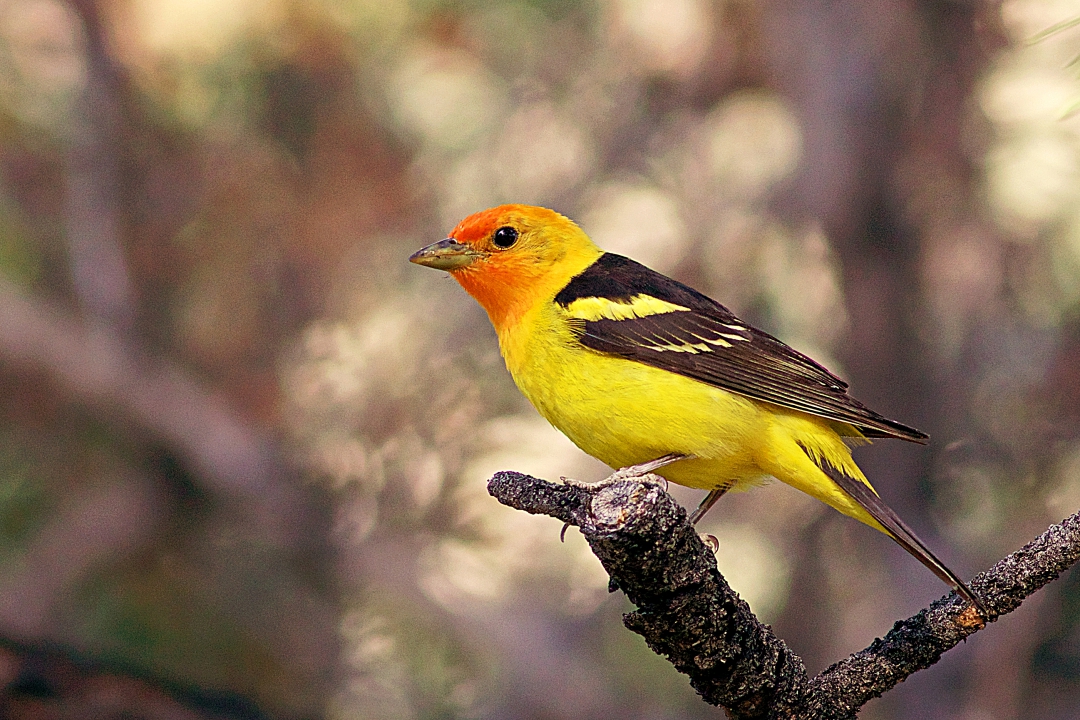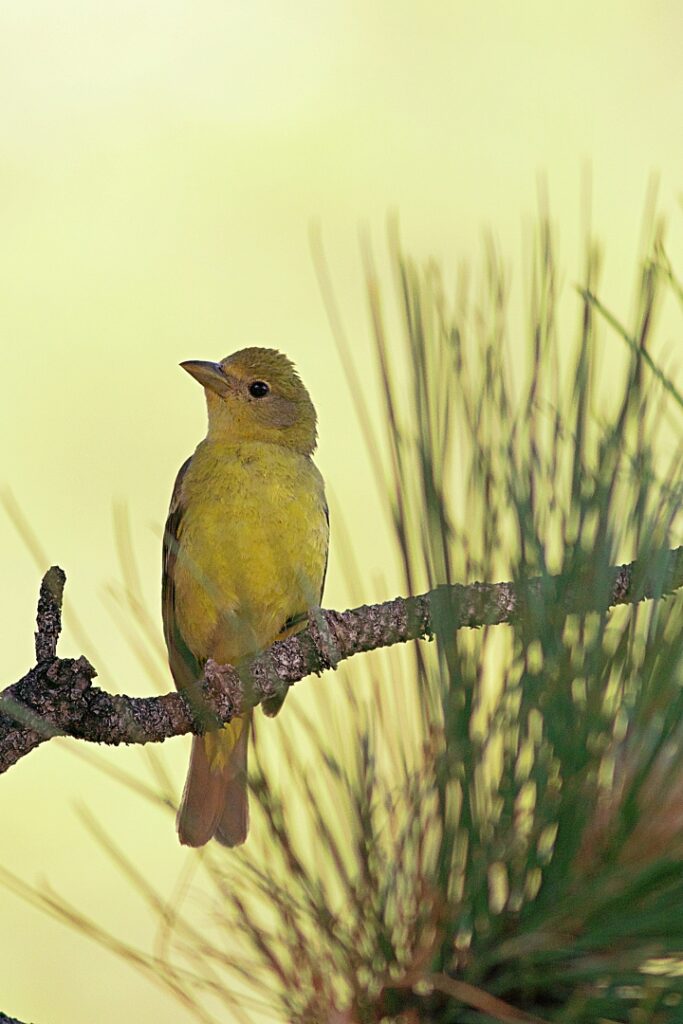If you are hiking anywhere in the Fay-Luther trail system and you hear this call,
keep your eyes peeled because there is a gorgeous bird making that sound…

Summer is here, which means so are the Western Tanagers! Western Tanagers are common in western conifer forests during the breeding season. Even though they are common in the Sierra, I always feel so lucky to see one. These birds live in open woods all over the West, particularly among evergreens, where they often stay hidden in the canopy.

The males are easy to identify, with their orange-red head, brilliant yellow body, and coal-black wings, back and tail. Here is a cool fact about the males…while most red birds owe their redness to a variety of plant pigments known as carotenoids, the Western Tanager gets its scarlet head feathers from a rare pigment called rhodoxanthin. Unable to make this substance in their own bodies, Western Tanagers probably obtain it from insects in their diet. Fascinating!
The females and immatures are a somewhat dimmer yellow-green and blackish.

Male Western Tanagers sometimes perform an antic, eye-catching display, apparently a courtship ritual, in which they tumble past a female, their showy plumage flashing yellow and black.
During breeding season, Western Tanagers eat mostly insects—especially wasps, ants, termites, stinkbugs, cicadas, beetles, grasshoppers, crane flies, dragonflies, caterpillars, scale insects, and sawflies. They also eat fruit, especially during fall and winter, when it may dominate the diet.
Speaking of colorful birds, how about a pink woodpecker?! I saw one of these on the Lonesome Trail last week, it is called a Lewis’s Woodpecker, named after Meriwether Lewis, who first saw the bird in 1805 while on his famous westward journey with William Clark.

Although the Lewis’s Woodpecker is indeed in the Woodpecker family, it does not behave like most woodpeckers. It seldom, if ever digs into trees for wood-boring insects. Instead, it gleans insects from the bark, or more commonly, flycatches. It spends long periods watching for flying insects from the top of a pole or dead tree, and then flies out to catch them.

It also has a color palette all its own, with a pink belly, gray collar, and dark green back unlike any other member of its family. A little smaller than a Northern Flicker (another species common in the our area), it calls open pine forests, pinyon-junipers, woodlands, and burned forests home, but it often wanders around nomadically outside of the breeding season in search of nuts.
They are found here year-round, so keep an eye out for them!
I would like to thank Curt Lueck for the amazing photos of the Western Tanagers! You can follow him here on Instagram to see more of his gorgeous photos, many taken locally.

Such beautiful birds. Thanks for posting.